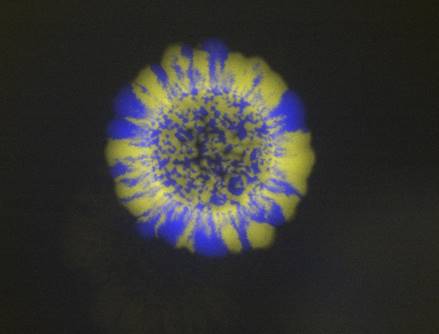 In recent years, scientists, doctors and pharmaceutical companies have sought to discover new antibiotics or alternative strategies against multi-resistant bacteria, a serious health problem today.
In recent years, scientists, doctors and pharmaceutical companies have sought to discover new antibiotics or alternative strategies against multi-resistant bacteria, a serious health problem today.
In an innovative study now published in the journal PLOS Biology, Isabel Gordo and her team at the Gulbenkian Science Institute (IGC) identified a compensatory mechanism that favors the growth of multiresistant bacteria and that can be used in the future as a new therapeutic target against these bacteria.
As the number of multiresistant bacteria increases, it is important to understand how they are maintained in the population.
Antibiotics are designed to attack essential cellular functions of bacteria. However, bacteria can evolve and become resistant to these drugs by acquiring mutations in genes involved in these functions.
This comes at a cost for the bacteria, since most mutations that confer resistance are harmful to the bacteria in the absence of the antibiotic.
To overcome this, bacteria can acquire other compensating mutations. It was completely unknown until now how these compensatory mutations evolve into multiresistant bacteria, and that's what Isabel Gordo's team set out to investigate.
Previous results from Isabel Gordo's laboratory have shown that genetic interactions between mutations that confer resistance occur frequently, and that these interactions are the engine for the development of multidrug resistance.
Now, researchers have shown that the pace of compensatory adaptation in strains of Escherichia coli (E. coli) multidrug-resistant is faster than in strains that have only one mutation.
More importantly, they were able to identify the key proteins involved in the compensatory mechanism of multidrug-resistant bacteria.
These results come from the analysis of strains of E. coli with only one resistance to rifampicin and streptomycin, and strains with resistance to both antibiotics, grown in medium without antibiotics.
“If we used a very simplistic metaphor and compared bacteria to a car, we could say that many mutations that confer resistance to streptomycin affect the cell's engine that drives protein production (the ribosome), while resistance to rifampicin arises from mutations in the accelerator of that engine (a protein called RNA polymerase). We have now discovered that the compensatory mechanism of E. coli multiresistant includes mutations in the 'clutch', that is, in the proteins that link the cell's 'engine' to the 'accelerator'”, explains Isabel Gordo.
The IGC researcher adds: "If we manage to block the proteins now identified, we might be able to kill multiresistant bacteria, as we would be eliminating this compensatory mechanism that favors their growth in the population."
The research team predicts that the mechanism now discovered can be used broadly in many other cases of multidrug resistance, since antibiotics affect the same cellular mechanisms. Thus, the proteins now identified could be good targets for designing therapies against multi-resistant bacteria.
This study was conducted at the Gulbenkian Institute of Science and funded by the European Research Council and the Foundation for Science and Technology.
Article reference:
Moura de Sousa J, Balbontin R, Durão P, Gordo I (2017) Multidrug-resistant bacteria compensate for the epistasis between resistances🇧🇷 PLoS Biol 15(4): e2001741. https://doi.org/10.1371/journal.pbio.2001741
Author: Ana Mena (IGC)
Science in the Regional Press – Ciência Viva


















Comments